The buzz about mosquitoes
Learning more about mosquitoes can help us control the blood-sucking insects and prevent deadly diseases.
By Emily Sohn
You swat. You slap. You duck. You run. It doesn’t matter. On summer evenings or dewy mornings, mosquitoes track you down and leave you with itchy red welts where they’ve punctured your skin and sucked blood.
With the little pests buzzing in your ears, biting your ankles and stabbing your arms, you could easily end up ditching the outdoors for the nearest air-conditioned, insect-free mall.
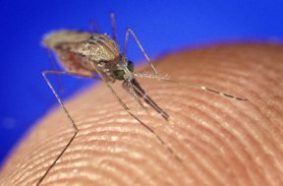 |
|
An Anopheles gambiae mosquito on human skin.
|
| Public Health Image Library |
“I hate them, too,” says biologist Elizabeth Willott of the University of Arizona in Tucson. Nevertheless, she chooses to spend a lot of time with the pesky critters. Along with other scientists around the world, Willott is trying to figure out what makes mosquitoes tick.
This may sound like horribly unpleasant work. But the research could save lives. Mosquitoes transmit diseases such as malaria and yellow fever. They carry the West Nile virus, which is now spreading across the United States. The more we know about mosquitoes, scientists say, the better we’ll be able to control them and prevent disease.
Nature’s balance
As annoying as mosquitoes are, Willott argues, they are an essential part of the web of life.
If mosquitoes were to disappear completely, animals that eat them might have trouble getting enough food. The list of mosquito eaters includes frogs, bats, birds, and fish.
Even as disease carriers, mosquitoes have a natural function. “They are one of those things whose job it is to keep [populations] in check,” Willott says.
Sheer diversity alone makes mosquitoes worthy of attention. Around the world, there are about 3,000 species. Some have longer legs or antennae than others have. Some are colored differently. One type has shiny blue legs. A species in Arizona is reddish gold. Another type has black and white stripes on its legs.
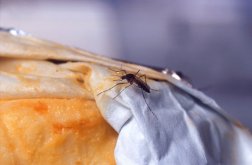 |
|
A female yellow fever mosquito sits on a piece of Limburger cheese.
|
| Peggy Greb, Agricultural Research Service, U.S. Department of Agriculture |
“Some of them are actually pretty,” Willott says.
Sucking blood
Only female mosquitoes actually suck blood, and not all species need it to survive. Most mosquitoes supplement their diet with nectar from plants.
To find sources of fresh human blood, mosquitoes fly toward carbon dioxide in the air we exhale. They’re also attracted by heat that comes off our bodies and to chemicals produced by bacteria that live on our skin.
In fact, your particular body chemistry may determine how appealing you smell to a hungry skeeter. This could account for why some people tend to get bitten more often than others.
Different species of mosquitoes prefer different body parts. “Some buzz around your ears and drive you bananas,” Willott says. Others target behind your elbows, behind your knees, or your ankles. Knowing which species live in your area can help you figure out which body parts you should cover up or where you should spray the most bug juice.
“If I were outside in Tucson during the day, I would predict that I would get bitten below the knee,” Willott says. “If I were out in the woods in Colorado, I would be more likely to get bitten on my arms.”
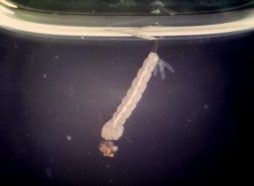 |
|
Larva of the Aedes aegypti mosquito.
|
| Public Health Image Library |
Mosquito bites itch because the insects inject proteins and other chemicals into your body when they bite. The chemicals help enlarge your blood vessels and keep blood from clotting. This makes it easier for a mosquito to get blood out. The chemicals also cause irritation, activating your immune system, which reacts to the chemicals and creates an unpleasant welt.
Some species seem to deliver bigger wallops than others do. Willott was in a lab once that had a variety of mosquitoes. Some of the critters escaped through tiny holes in their cages and proceeded to bite anyone who ventured into the lab.
“I developed different welts from different species,” she says. Some welts were pink and lumpy. Others were red and flat.
Carrying disease
Although an itchy welt may be annoying, other consequences of mosquito bites can be far more serious. Some mosquitoes carry and spread diseases, including malaria, yellow fever, dengue fever, and encephalitis. All of these diseases can kill people.
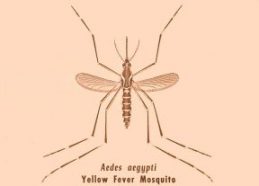 |
|
The Aedes aegypti mosquito spreads yellow fever.
|
| Public Health Image Library |
When a mosquito bites a person, bird, or other animal that has one of these diseases, the infected blood gets into the mosquito’s body. In the case of West Nile, the virus then multiplies inside the mosquito over the next few days. When the mosquito bites another animal, it injects the virus. With enough mosquitoes and infected animals in an area, diseases can spread like lightning.
Figuring out which species of mosquitoes spread which diseases is one step toward squelching epidemics altogether, Willott says. With the help of a graduate student, she has been analyzing blood inside one of three species of mosquitoes that live in Tucson. By looking at proteins in the blood, the researchers have learned that the species feeds on both birds and humans.
“That’s important because we’re getting West Nile this year,” she says. West Nile started as a bird disease but has spread to people.
Getting rid of the mosquitoes completely is not an option, Willott says. “But you can tell people the species they have in their backyards is likely to be a [carrier of] West Nile,” she says. “It’s important to be vigilant this summer.”
One way to cut your own risk of getting and spreading diseases such as West Nile is to make your house and yard as mosquito-unfriendly as possible. Mosquito larvae need water to survive. Even the amount of water needed to fill a coffee cup is enough for eggs to grow and hatch.
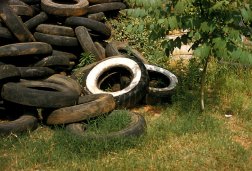 |
|
Discarded tires can collect water and serve as homes for mosquito larvae.
|
| Public Health Image Library |
Watch out for standing pools of water in birdbaths, old tires, or saucers under your potted plants. Larvae look like little worms with big heads. As soon as you dump them on the ground, they’ll die.
It’s also a good idea to keep your body covered by wearing long sleeves and pants to avoid getting bitten. Oils and lotions can help too, Willott says.
If you’re going to be outside for long periods of time in buggy places, though, your best bet is to slather on a bug repellent that contains a chemical called DEET.
DEET chemistry
Scientists still don’t know exactly how DEET works. In small doses, the chemical actually attracts mosquitoes. In large amounts, however, the chemical keeps mosquitoes away.
DEET works wonders as a repellent, but it’s toxic and smelly. “Most teenagers would not want to go on a date,” Willott says, “smelling of ‘Eau de DEET.'” Experts are also worried that mosquitoes will eventually get used to DEET, making it less effective.
Better mosquito repellents may be on the way, thanks to chemist Subhash Basak and others. Basak is at the University of Minnesota in Duluth. He’s leading a huge new project to develop alternatives that will repel mosquitoes just as well as DEET does but are less toxic than DEET.
Basak’s lab doesn’t have a single mosquito in it. The researchers rely on computers to do their studies.
Basak and his colleagues start with the chemical structure of DEET. Known as diethyltoluamide, a DEET molecule is made up of 12 carbon atoms, 17 hydrogen atoms, one nitrogen atom, and one oxygen atom.
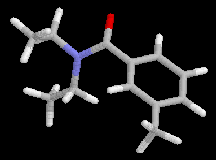 |
|
A DEET molecule. The locations of hydrogen atoms are shown in white, the nitrogen atom in violet, and the oxygen atom in red. Carbon atoms sit at the corners of the gray structures.
|
| Lawrence Livermore National Laboratory |
They use a computer to figure out what happens when they make a tiny change to a DEET molecule, such as adding or moving an atom. By looking at the resulting molecule’s shape, they can get an idea if the new substance may be toxic to mosquitoes or people or may damage the environment.
Using a computer allows the researchers to try out thousands of different possibilities, quickly and safely. Once they find 20 or 30 good possibilities, they’ll head into the lab to test them.
“We’re like criminologists,” Basak says. “When you want to find a criminal, you go to the neighborhood where the gang members go, and then you look for the good guys and the bad guys. Our goal is to avoid the bad guys and make the good guys better.”
It’ll be at least 5 years before anything new will be available, Basak says. In the meantime, you might want to do what mosquito scientists do: Keep learning about the fascinating insects, but keep your guard up.
“I can appreciate mosquitoes,” Willott says. But, “that doesn’t alter the fact that when one lands on me, I swat it.”
Mosquito Facts
- An adult mosquito can live as long as 5 months. It may take several months for a larva to develop to the adult stage in cold water.
- An adult female mosquito weighs about 2.0 milligrams.
- An adult female mosquito takes in about 5-millionths of a liter of blood in a single meal.
- A mosquito wing beats from 300 to 600 times per second.
- Male mosquitoes find female mosquitoes by listening to the sound of their wings beating. The males can actually identify the correct species by the pitch of the female’s wings.
- Mosquitoes can fly about 1 to 1.5 miles per hour.
- A mosquito can detect the carbon dioxide you exhale from about 60 to 75 feet away.
Source: Centers for Disease Control and Prevention







